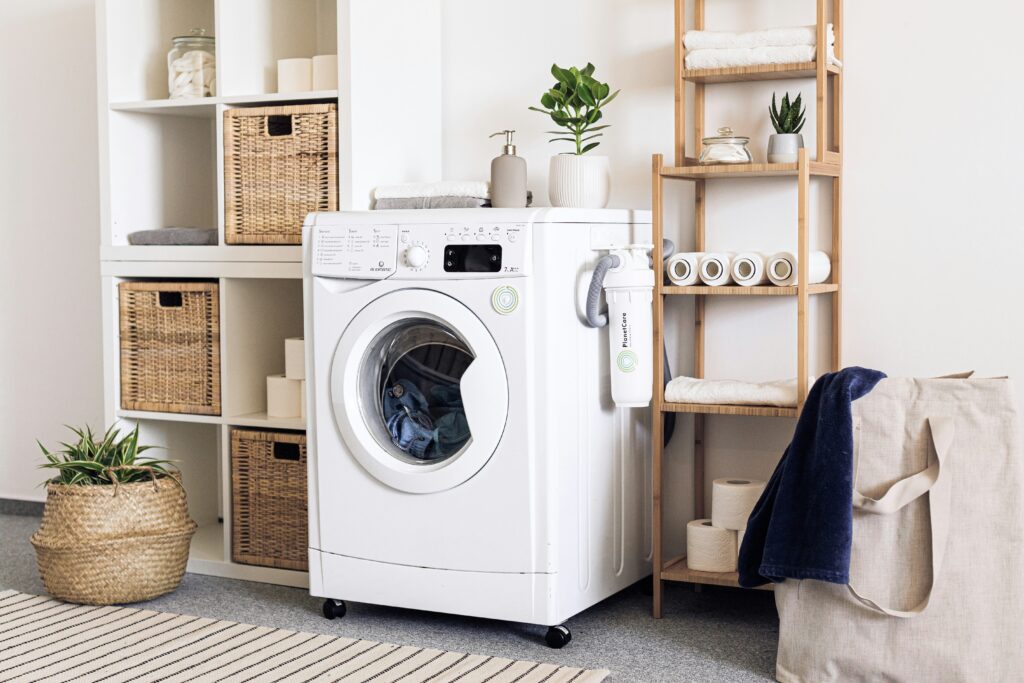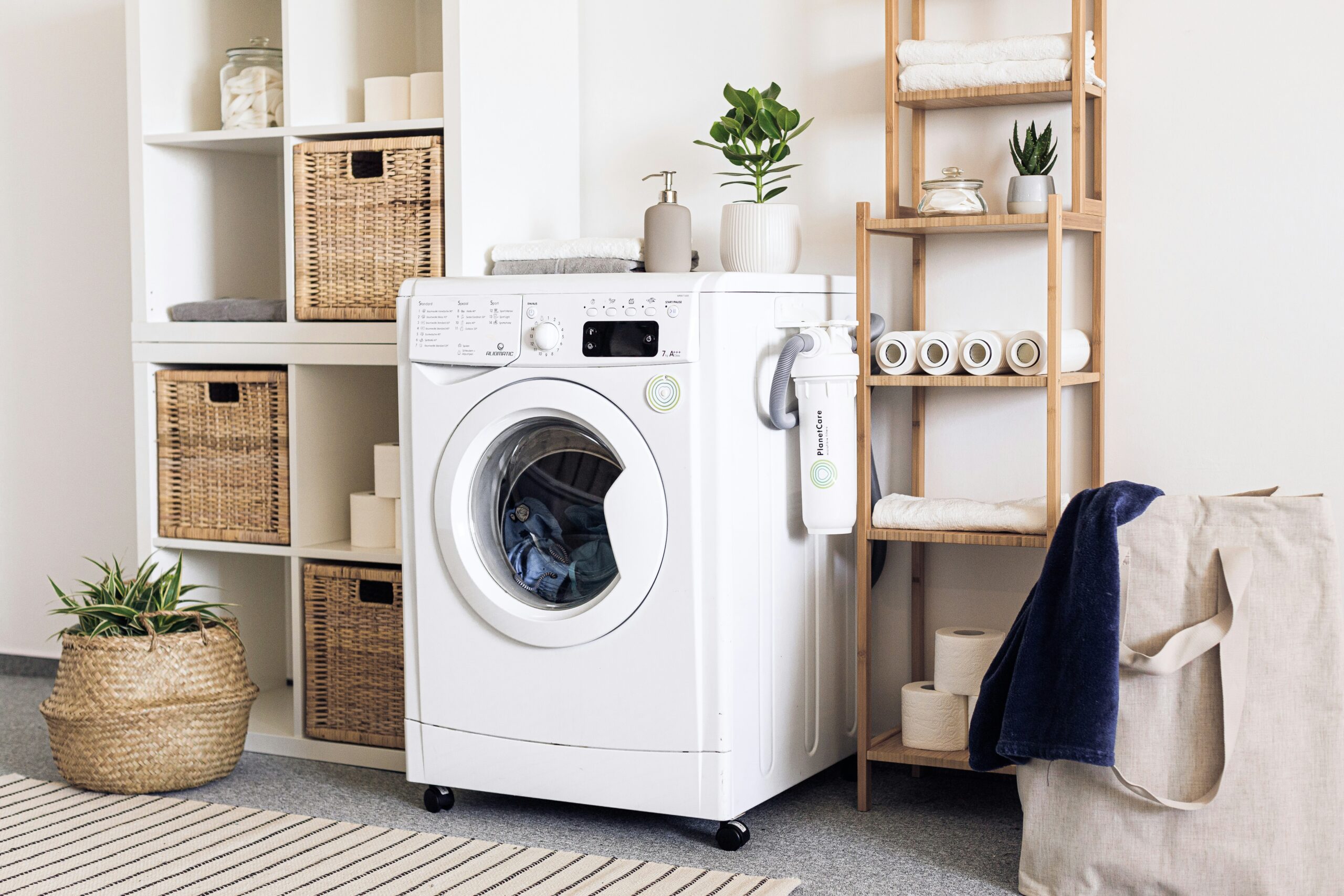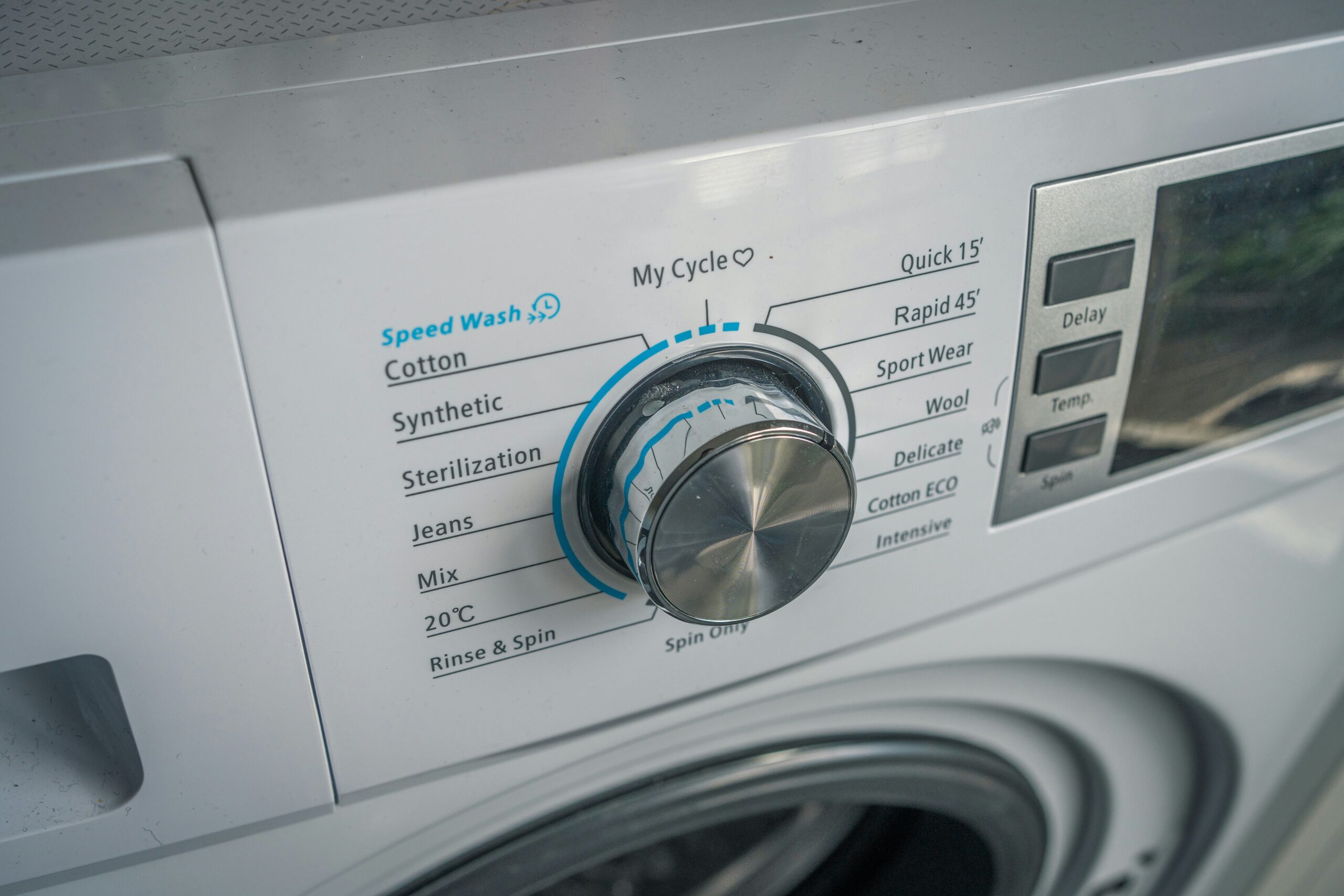DIY Guide to Replacing a Washing Machine Door Seal
A washing machine door seal, also known as a gasket or boot, is critical in keeping water inside the drum during a wash cycle. Over time, this rubber seal can wear out, crack, or develop mold, leading to leaks, odors, and even damage to your machine. Replacing the door seal might seem daunting, but with the right tools and guidance, it’s a manageable DIY project that can save you from costly repairs or a new machine. We’re here to empower you with the knowledge to tackle this repair confidently. In this detailed guide, we’ll walk you through the step-by-step process of replacing a washing machine door seal, from diagnosing the issue to testing your repair. Let’s get your washer back to leak-free operation!
Understanding the Washing Machine Door Seal
The door seal is a flexible rubber component that creates a watertight barrier between the washing machine drum and the door. It’s typically found on front-loading washing machines, where it prevents water from escaping during the high-speed spin cycles. The seal also protects the door and drum from damage by absorbing vibrations.
Signs You Need to Replace the Door Seal
- Leaks: Water pooling around the door during a cycle is a clear sign of a damaged seal.
- Mold or Odor: Black spots, mildew, or a musty smell indicate mold growth, which can compromise the seal’s integrity.
- Cracks or Tears: Visible damage, such as cracks, tears, or brittleness, means the seal can no longer hold water effectively.
- Excessive Noise: A worn seal may cause the drum to rub against the door, creating unusual noises.
Why Door Seals Fail
- Wear and Tear: Constant exposure to water, detergent, and high-speed spinning wears out the rubber over time.
- Mold Growth: Trapped moisture in the seal’s folds can lead to mold, which degrades the material.
- Improper Cleaning: Harsh chemicals or neglecting to clean the seal can cause it to deteriorate.
- Overloading: Overloading the machine puts extra strain on the seal, causing it to stretch or tear.
Preparing for the Repair: Safety and Tools
Replacing a washing machine door seal involves working with electrical components and water, so safety is paramount. Here’s how to prepare.
Step 1: Gather Your Tools and Materials
You’ll need the following:
- Replacement door seal (specific to your washing machine model)
- Screwdriver (Phillips or flathead, depending on your machine)
- Pliers (for removing retaining bands)
- Socket wrench or nut driver (for some models)
- Mild dish soap and water (for cleaning)
- Soft cloth or sponge
- Work gloves (to protect your hands)
- Towel or shallow pan (to catch water)
- Bucket (for draining residual water)
Step 2: Order the Correct Replacement Seal
Check your washing machine’s manual for the model number and order a compatible door seal. If you don’t have the manual, look for the model number on a label inside the door or on the back of the machine. Bring the old seal to an appliance store or order online to ensure a perfect match.
Step 3: Safety Precautions
- Unplug the Machine: Disconnect the washing machine from the power outlet to avoid electrical shock.
- Turn Off the Water Supply: Shut off the water supply to the machine (usually via a valve under the sink or behind the washer).
- Prepare for Water: Have a towel or pan ready to catch any residual water that may spill during the repair.
Step 4: Move the Washing Machine
Pull the machine away from the wall to access the front and top. Place a towel under the machine to protect the floor and catch any drips.
Step-by-Step Guide to Replacing the Door Seal
Now that you’re prepared, let’s walk through the process of replacing the door seal. This guide focuses on front-loading washing machines, as they’re the most common type with door seals. Note that the exact steps may vary slightly depending on your model, so consult your manual for specific instructions.
Step 1: Drain Residual Water
Before starting, ensure there’s no water left in the drum or filter.
- Check the Drum: Run a short spin cycle to drain any remaining water in the drum.
- Clean the Filter: Locate the filter (usually at the bottom front, behind a small access panel). Place a shallow pan or towel underneath, open the filter, and let any water drain into the pan. Clean the filter while you’re at it to remove debris.
Step 2: Remove the Old Door Seal
The door seal is held in place by retaining bands or clamps, one on the outer edge (near the door) and one on the inner edge (near the drum).
Remove the Outer Retaining Band
- Open the Door: Fully open the washing machine door to access the seal.
- Locate the Outer Band: Look for a metal or plastic retaining band around the outer edge of the seal. It may be held by a spring, screw, or clip.
- Release the Band:
- If there’s a spring, use a flathead screwdriver to pry it off by stretching the spring and pulling the band away.
- If there’s a screw or clip, loosen it with a screwdriver or pliers.
- Peel Back the Seal: Once the band is removed, peel the outer edge of the seal away from the door frame.
Remove the Top Panel (If Necessary)
Some models require removing the top panel to access the inner retaining band.
- Unscrew the Top Panel: Use a screwdriver to remove the screws at the back of the top panel (usually 2–4 screws).
- Slide the Panel Off: Slide the panel back and lift it off, setting it aside.
Remove the Front Panel (If Necessary)
In some machines, you’ll need to remove the front panel to access the inner band.
- Remove the Detergent Drawer: Pull out the detergent drawer and press the release button to remove it completely.
- Unscrew the Control Panel: Remove the screws holding the control panel (usually above the drawer and along the top edge). Gently lift the panel and disconnect any wires (take a photo for reference).
- Remove the Kickplate: Unscrew the kickplate at the bottom of the machine.
- Unscrew the Front Panel: Remove the screws holding the front panel (often near the kickplate and under the control panel). Lift the panel off, taking care not to damage any wires or the door latch.
Remove the Inner Retaining Band
- Locate the Inner Band: Inside the drum, find the second retaining band holding the seal to the drum lip. It’s usually a wire or plastic clamp.
- Release the Band: Use pliers or a screwdriver to loosen the band (similar to the outer band). Some models have a tension spring or a screw to loosen.
- Remove the Seal: Pull the seal off the drum lip. It may be tight, so work slowly around the entire circumference to avoid tearing it.
Step 3: Clean the Area
With the old seal removed, take the opportunity to clean the area.
- Clean the Drum Lip: Use a cloth with mild dish soap and water to clean the drum lip where the seal attaches. Remove any mold, detergent residue, or debris.
- Clean the Door Frame: Wipe down the door frame where the outer edge of the seal sits.
- Dry Thoroughly: Ensure the area is completely dry before installing the new seal.
Step 4: Install the New Door Seal
Installing the new seal requires careful alignment to ensure a watertight fit.
Prepare the New Seal
- Soak the Seal (Optional): Soak the new seal in warm water for 10–15 minutes to make it more pliable and easier to install.
- Identify the Top Mark: Most seals have a small mark or arrow indicating the top. This ensures proper alignment, as the seal often has a specific orientation.
Attach the Inner Edge to the Drum
- Align the Seal: Start at the top of the drum and press the inner lip of the seal onto the drum’s edge. Work your way around, ensuring the seal fits snugly into the groove.
- Secure the Inner Band: Reinstall the inner retaining band:
- If it’s a spring band, stretch it around the seal and hook it into place.
- If it’s a screw or clip band, tighten it with a screwdriver or pliers.
- Check the Fit: Ensure the seal is evenly seated with no gaps or wrinkles.
Attach the Outer Edge to the Door Frame
- Pull the Seal Through: Pull the outer edge of the seal through to the door frame.
- Align and Press: Press the outer lip of the seal into the groove around the door frame, starting at the top and working around.
- Secure the Outer Band: Reinstall the outer retaining band, tightening it as you did during removal. Ensure it’s snug but not overly tight, as this can distort the seal.
Step 5: Reassemble the Washing Machine
- Reattach the Front Panel (If Removed): Screw the front panel back on, reconnect any wires, and reinstall the control panel and detergent drawer.
- Replace the Top Panel: Slide the top panel back into place and secure it with screws.
- Double-Check: Ensure all screws are tightened and no wires are pinched.
Also, check out our guide on How to Avoid Common Hazards by Following Safety Warnings in Appliance Repairs
Step 6: Test the Repair
- Turn On the Water Supply: Open the water valve to restore the water supply.
- Plug In the Machine: Reconnect the washer to the power outlet.
- Run a Test Cycle: Run a short cycle (e.g., a rinse cycle) with no laundry in the drum. Watch for leaks around the door and listen for unusual noises.
- Inspect the Seal: After the cycle, check the seal for any signs of leakage or misalignment. If there’s a leak, recheck the retaining bands and ensure the seal is properly seated.
Post-Repair Maintenance Tips
To prevent future issues with your new door seal, follow these maintenance practices:
- Clean the Seal Regularly: Wipe the seal with a damp cloth after every few washes to remove detergent residue and prevent mold. Use a vinegar solution for stubborn mold spots.
- Leave the Door Open: After each cycle, leave the door slightly ajar to allow the seal to dry, reducing the risk of mold growth.
- Avoid Overloading: Overloading the machine can stretch or tear the seal. Follow the manufacturer’s load capacity guidelines.
- Run a Cleaning Cycle: Once a month, run a cleaning cycle with vinegar or a washing machine cleaner to keep the drum and seal fresh.
When to Call a Professional
While replacing a door seal is a DIY-friendly task, some situations may require expert help:
- Complex Disassembly: If your machine’s design makes it difficult to access the seal (e.g., requiring extensive panel removal), a professional can handle it safely.
- Persistent Leaks: If the machine still leaks after replacing the seal, there may be an underlying issue, such as a warped drum or door.
- Electrical Concerns: If you notice any electrical issues (e.g., a burning smell or sparks) during the repair, stop and call a technician.
Why a Good Door Seal Matters
A damaged door seal can lead to several problems:
- Water Damage: Leaks can ruin flooring, walls, or other appliances, leading to costly repairs.
- Mold Growth: Mold in the seal can spread to laundry, affecting air quality and health.
- Inefficiency: Leaks can cause the machine to work harder, increasing energy and water usage.
- Component Damage: Water escaping the drum can damage the motor, pump, or electronics, leading to more extensive repairs.
Replacing the seal promptly can prevent these issues, saving you money and keeping your laundry routine on track. For more on leak prevention,
Also, check out our guide on The Impact of Hard Water on Appliances and How to Mitigate It.
Why Choose Tech-Angels?
At Tech-Angels, we’re dedicated to helping Vancouver residents keep their appliances in top condition. Our team offers fast, reliable repair services for all major washing machine brands, ensuring your machine operates efficiently. Explore our blog or contact us today to book a service for more appliance repair tips.
Conclusion
Replacing a washing machine door seal is a manageable DIY project that can save you from leaks, odors, and costly damage. By following the steps in this guide—removing the old seal, cleaning the area, installing the new seal, and testing the repair—you can restore your washer’s performance and prevent future issues. Regular maintenance and proper usage are key to keeping your new seal in good condition. If you encounter any challenges or need expert assistance, the team at Tech-Angels is here to help with professional washing machine repair services. Get your washing machine back to peak performance—tackle that door seal replacement today!






